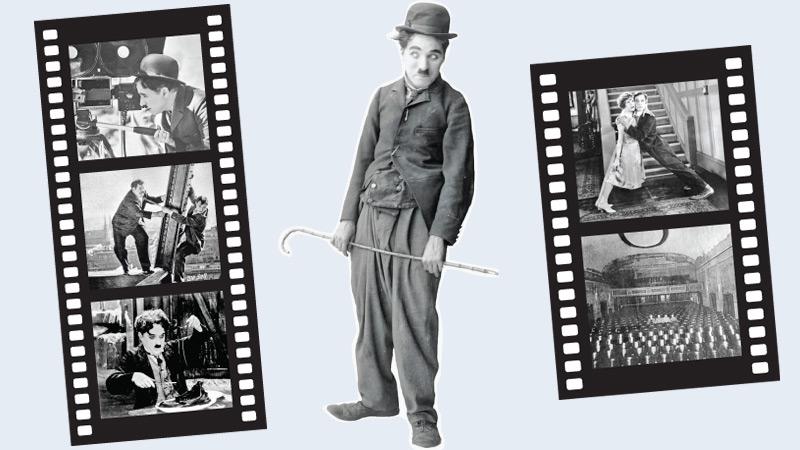
Silent films, as the name implies, refers to films without an accompanying synchronized audio track, generally that of dialogue.
Produced between the late 1800s and the late 1920s, silent films were the earliest form of motion picture production, predating any practical method of combining motion pictures with recorded sound.
Despite this limitation, silent films were able to captivate audiences with their unique storytelling techniques and innovative use of visuals. Despite the fact that this period of film only lasted a relatively short time, just a little more than two decades, it laid the foundation for everything that would follow after.
 Silent films as a term, was coined retroactively after the silent movie era had ended. The term itself is a bit of a misnomer, since most silent films were far from silent.
Silent films as a term, was coined retroactively after the silent movie era had ended. The term itself is a bit of a misnomer, since most silent films were far from silent.
Often, silent films would have a live musical accompaniment, like an orchestra, which would play background music to suit the scenes as they happened. A live soundtrack was necessitated due to the inconsistent frame rate of films back then.
No consistency
Though some had recommended frame rates from the filmmakers, they still depended on the projectionist. Hand cranked projectors meant there was no consistency even among showings of the same film, and film halls strived to speed up movies to fit more screenings into a day. This is why in film discussion, the length of silent films is sometimes referred to by the number of reels and print length rather than time.
The early silent films were usually shot in one short take, and lacked narrative structure. They were essentially moving pictures that captured everyday life and events. The first silent film was produced in 1895 by the Lumiere Brothers, and it was a short documentary-style film titled “Workers Leaving the Lumiere Factory.”
This was followed by several other short films, which were mainly used for scientific and educational purposes. As the technology and art of filmmaking advanced, however, so did the scope and complexity of the films. Filmmakers began to experiment with different storytelling techniques and genres, including comedies, dramas, and even horror films.
The 1916 silent film, ‘The Birth of a Nation’, is commonly regarded as the first great Hollywood epic. Though it was considered highly controversial, even in its time, it was still a landmark in cinema history, pioneering a lot of filmmaking techniques and tropes that are considered commonplace today. Its groundbreaking success proved cinema to be more than a passing fad, inspiring more studios and film makers to take up the craft.
Iconic films
Some other iconic films of the silent era include ‘Metropolis’ (1927), ‘The General’ (1926), and ‘City Lights’ (1931). These and many more films of the era were essential in innovating special effects, storytelling, and cinematography techniques. Despite their popularity, however, silent films were not without their restrictions.
The lack of synchronized sound meant that the plot and dialogue had to be conveyed visually through clever filmmaking and on screen inter-titles. Though this led to filmmakers getting even more creative, it was a limitation that Vaudeville, the silent film’s main competition, did not have.
This period of filmmaking gave rise to many of the big name studios that still dominate the film industry today, such as Metro-Goldwyn-Mayer, Paramount Pictures, Universal Pictures, Paramount Pictures, and many more. By the 1920s, these studios were producing films at an incredible rate, with an average of over 800 films being made annually.
However, most of them have since been lost to time. It has been estimated that 75-90% of all silent films produced in the US have been lost, due to most film celluloids being highly flammable, poorly contained, or disposed of to cut costs. Studios also used to keep actors anonymous to avoid them getting too popular, which would lead to them demanding higher pay with their popularity. But an inquisitive movie-going audience forced that policy to change, giving rise to many stars of the silent period, such as Charlie Chaplin, Buster Keaton and Greta Garbo.
The introduction of synchronized sound in the late 1920s revolutionized the film industry and led to the decline of silent films. Sound allowed filmmakers to better convey their plots and actors were better able to portray their characters through audible dialogue. The transition to sound was not without its challenges, however, and many silent film stars struggled to adapt to the new medium, with most failing to make that leap into sound.
